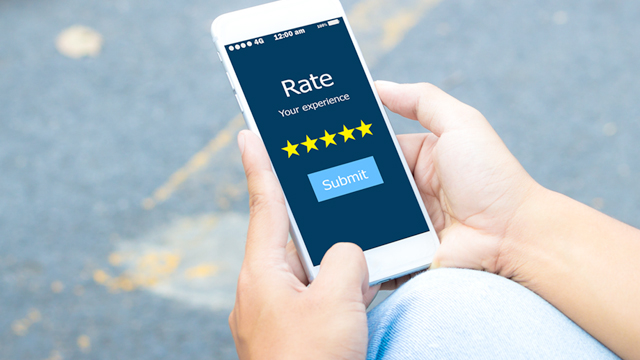Discover ways to enhance your social media marketing strategy with our guide to the leading platforms.
87% of consumers think that social media helps them make purchasing decisions1 – proof, if needed, of the importance of a social media marketing strategy to your business’s success.
The leading platforms’ reach spans billions of users across the world, making them an unrivalled marketing channel for almost every type of business. For SMEs with a limited advertising budget, social media has plenty of free ways to build and engage an audience.
How do I promote my product on social media?
The best practice is to follow the five Cs of social selling:
This is one of the key objectives of being active on social media: to create a brand presence that effectively communicates your business’s unique proposition to prospective customers.
It’s called social media after all; a place to network, reach out to potential customers, and nurture relationships with prospects.
Here, think quality over quantity. By sharing valuable, insightful content, you can position your business as an expert within your sector, thus establishing credibility and trust with your target audience.
It’s essential to actively have conversations with your followers – answer questions, host discussions, and invite feedback – in order to strengthen the relationships.
This is the end goal of social selling. You’ve spent time building an engaged audience; now you can nurture the relationships further to guide prospects through the sales funnel and convert them into loyal customers.
What social media is best for selling products?
With so many platforms to choose from, which social selling platform is recommended for building and nurturing relationships? Let’s explore the leading ones and the best practices to getting the most out of each.

LinkedIn has over 1 billion members spread across 200+ countries and territories2. As a professional networking site, it lends itself particularly well to the relationship nurturing required within the B2B sector. Not surprisingly, over 90% of B2B marketers use LinkedIn for organic social marketing, and report up to 2x higher conversion rates than other platforms3.
Social media marketing on LinkedIn: best practices
Showcase your expertise
On LinkedIn, value should come first, selling second. As a site for professionals, your business should be sharing insights to demonstrate its expertise within its particular industry; posting thought leadership pieces is a key way to build your brand’s credibility.
Optimize your company page
The “About Us” section is your opportunity to tell your brand’s story and lay out the value of its product or service. LinkedIn recommends a 2000-character limit to keep readers engaged, so be clear and concise about your strengths and unique selling point(s). Use keywords and include a link back to your business’s website where prospects can explore more.
Check your LinkedIn Social Selling Score
LinkedIn’s Social Selling Index (SSI) is a tool that measures businesses’ social selling performance on the platform. It considers four factors: establishing a personal brand, finding the right people, engaging with insights, and building relationships. By knowing your SSI score, you’ll identify weaknesses in your social selling strategy which you can then improve on.
Use your employees as advocates for your business
Encouraging your employees to reshare, like and comment on your business’s posts is a simple and cost-effective way to get your brand message to go further.

Instagram boasts over 2 billion monthly active users4. Perhaps even more impressive, approximately 20% of all internet users visit the social media site daily5, highlighting its widespread adoption. So, whatever your business, the chances are you’ll find some new customers on Instagram.
Social media marketing on Instagram: best practices
Post at the right time
Use an analytics tool to learn about your followers’ Instagram habits. You can then create a content calendar scheduled around the times they’re most often online.
Pin your best posts
You have three golden spots at the top of your feed to showcase your brand’s best offers, promotions, or best-selling product(s). Choose wisely!
Engage with your followers
Answer questions and invite feedback. Pay close attention to the discussions your followers are having in the comments section, too; this will give you insights into current trends within your sector.
Use the right hashtags
Popular and generic hashtags will make it hard for your posts to stand out. Instead, think about more specific/niche tags that will connect your brand to prospects.
Utilize Instagram Shopping
44% of people said they use Instagram to shop weekly6. The platform’s dedicated suite of e-commerce tools include a shopping tab, product tags, and “Buy” buttons which consumers can use to purchase from brands without leaving the app – simplicity which incentivizes them to buy.

Whilst it might not be new and shiny anymore, Facebook still deserves a place on this list. It is the world’s most popular social media platform, with over three billion monthly active users7.
Social media marketing on Facebook: best practices
Keep engagement on the platform
Facebook prioritizes and ranks content that keeps people on the website/app, so try and refrain from linking to external channels. Instead, use your business’s page to share updates, photos, videos, and discussions around trending topics – anything to keep them engaged there and then.
Create a community feel
The platform has a big emphasis on community. With Facebook Groups, you can create a space where people can interact and share experiences. Just stay away from sales-y content; over time, this will help your brand build an authentic connection with followers that will nurture loyalty and trust.
Post lots of videos
Video content tends to perform well on Facebook. Whether you post short-form tips and tutorials or use Facebook Live to update followers on news from your brand, remember to make it interesting and of value!
Use Facebook Messenger
This feature lets you interact directly with followers, instantly. You can even set up automatic replies to ensure you never miss a query from a lead when you’re “away” from your page.
Set up a Facebook Shop
With this tool, sellers can create an online store on their Facebook business page to sell directly to customers on the platform. The feature’s user-friendly interface and flexible checkout options make it a great option for SMEs.

Arguably the most creative of the leading social media sites, Pinterest has nearly 500 million monthly active users8. These “pinners” use the image-based platform to share pinboards themed around things like fashion, recipes and lifestyle.
Social media marketing on Pinterest: best practices
Prioritize fresh pins
Pinterest’s algorithm favors new pins, rather than duplicate pins (defined as those with an exact image/URL combination that has already been pinned.) So, focus on populating your boards with unique and inspiring content that users can’t find elsewhere.
Create impactful visuals
80% of weekly Pinterest users have discovered a new brand or product via the platform9. To catch scrollers’ attention, you’ll need to create pins that stand out. Use eye-catching colors, write interesting titles and descriptions (ideally bullet points to aid digestibility), and ensure your board has a range of content like blogs, infographics and videos to avoid monotony.
Don’t overpin
An analysis of Pinterest’s most successful users10 suggests the ideal number of pins to post a day is between 15 and 25.
Use relevant keywords
Ensure your pins are seen by the right audience by using keywords across your profile’s “About” section, on your board’s description, and within the title and description.

X (formerly Twitter)
Home of news, current affairs, and a fair few political debates, X attracts those with something to say. The social network has more than 540 million monthly users – over 35% of whom use it to follow or research brands and products11.
Social media marketing on X: best practices
Join in
X is predominantly about community and conversations. Reply to tweets, and retweet and like others’ content. Keep tabs on trending topics and join in the discussions to help your brand build its presence.
Craft your bio
Write an interesting – but concise – description about your business: what it does, its unique selling point, and a link to your website.
Be consistent
Post frequently – 2-4 times a day – to keep your followers engaged. Audiences crave variety, so share a mixture of original tweets, retweets, photos, videos and polls.
Host Twitter Spaces
This feature allows users to have live audio conversations – with another user or a group of users. For brands, it’s an opportunity to engage directly with customers; to let them know about a new product or service, invite feedback, or host a Q&A session – to name a few examples. All of which helps them to nurture relationships and build meaningful connections with prospects and customers.

TikTok
The new kid on the block has enjoyed phenomenal growth. In 2021, the video-sharing platform was the most downloaded app12. Today, it has more than 1.7 billion users worldwide13, and is particularly popular with Gen Z and millennials, making it an important channel for any business wishing to target those demographics.
Social media marketing on TikTok: best practices
Make the first few seconds count
Users tend to scroll through videos quickly, so the first couple of seconds of yours need to grab their attention – which means it’s time to sharpen up your creative skills. Be original and stoke a sense of curiosity; use captions to tease something interesting or surprising might happen if the user watches to the end.
Optimize for search
Use keywords within your captions to help your content be found by people actively interested in your topics. Alternatively, you can approach this from a different angle – i.e. see what keywords are trending and use them to inform what content you create.
Engage with other users
The best way for your brand to be discovered by new users is by appearing on their “For You” page. This is determined by the TikTok algorithm, which prioritizes accounts with high engagement. A key way to increase yours is by using analytics tools to identify when your followers are most active online and then schedule your content accordingly. You can also build engagement by joining in with viral trends and challenges.
Keep it fun
“Entertainment” is the most popular content category on TikTok. Make your videos snappy, and fun, and don’t be afraid to use humor! 65% of TikTokers say professional-looking videos from brands feel out of place14, so focus on authentic but “lighter” content – behind-the-scenes videos are a great example.
Set up a TikTok Shop
It’s relatively simple (and free!) to start selling on the platform – either by listing products directly on a TikTok Business account, or by linking your existing TikTok account to an external e-commerce platform (like Shopify.) You can then promote your products with shoppable videos and livestream shopping events. The platform also promises a wide range of educational resources – from detailed walk-throughs to fun, short TikToks – to help sellers get the most out of the service.
Once your social media strategy is polished, you’ll need a logistics partner to help you manage the extra orders! Open a DHL Express Business Account to receive support from the international shipping experts – wherever in the world your customers may be.































